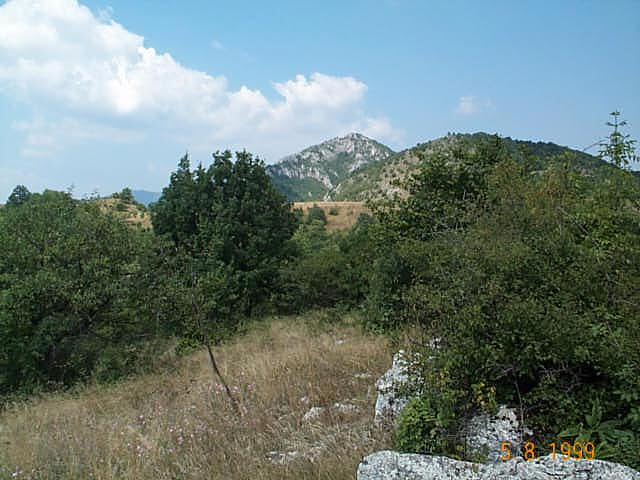|
Ancient and Medieval History
At the dawn of history the ancient Thraciansa group of tribes speaking an
Indo-European languageextended as far west as the Adriatic Sea, but they were pushed eastward (c.1300 B.C.)
by the Illyrians, and in the 5th cent. B.C. they lost their land west of the Struma (Strimn) River to Macedon. In the north,
however, Thrace at that period still extended to the Danube. Unlike the Macedonians, the Thracians did not absorb Greek culture,
and their tribes formed separate petty kingdoms. The Thracian Bronze Age was similar to that of Mycenaean Greece, and the
Thracians had developed high forms of music and poetry, but their savage warfare led the Greeks to consider them barbarians.
Many Greek coloniese.g., Byzantium on the Hellespont and Tomi (modern Constana) on the Black Seawere founded in Thrace by
c.600 B.C. The Greeks exploited Thracian gold and silver mines, and they recruited Thracians for their infantry. Thrace was
reduced to vassalage by Persia from c.512 B.C. to 479 B.C., and Persian customs were introduced. Thrace was united as a kingdom
under the chieftain Sitalces, who aided Athens during the Peloponnesian War, but after his death (428 B.C.) the state again
broke up. By 342 B.C. all Thrace was held by Philip II of Macedon, and after 323 B.C. most of the country was in the hands
of Lysimachus. It fell apart once more after Lysimachus death (281 B.C.), and it was conquered by the Romans late in the 1st
cent. B.C. Emperor Claudius created (A.D. 46) the province of Thrace, comprising the territory south of the Balkans; the remainder
was incorporated into Moesia. The chief centers of Roman Thrace were Sardica (modern Sofia), Philippopolis (Plovdiv), and
Adrianople (Edirne). The region benefited greatly from Roman rule, but from the barbarian invasions of the 3d cent. A.D. until
modern times it was almost continuously a battleground. The northern section passed (7th cent.) to the Bulgarians; the southern
section remained in the Byzantine Empire, but it was largely conquered (13th cent.) by the second Bulgarian empire after a
brief period under the Latin Empire of Constantinople. In 1361 the Ottoman Turks took Adrianople, and in 1453, after the fall
of Constantinople, all of Thrace fell to the Turks.
MODERN HISTORY
In 1878, N Thrace was made into the province of Eastern Rumelia; after the
annexation (1885) of Eastern Rumelia by Bulgaria (which had gained independence in 1878), the political meaning of the term
Thrace became restricted to its southernmost part, which was still in Turkish hands. The terms Eastern Thrace and Western
Thrace were used for the territories east and west of the Maritsa River. In the first of the Balkan Wars (191213) Turkey ceded
to Bulgaria all Western Thrace and the inland half of Eastern Thrace, including Adrianople, but after its defeat in the Second
Balkan War (1913), Bulgaria retroceded all Thrace east of the Maritsa to Turkey. After World War I, Bulgaria ceded the southern
part of its share of Thrace to Greece by the Treaty of Neuilly (1919), thus losing its only outlet to the Aegean. By the Treaty
of Svres (1920) Greece also obtained most of Eastern Thrace except the zone of the Straits and Constantinople; the treaty,
however, was superseded by the Treaty of Lausanne (1923), which restored to Turkey all Thrace E of the Maritsa. As a result
of subsequent population movements, the ethnic composition of the various parts of Thrace now corresponds largely to the national
divisions. The Greek-Bulgarian frontier of 1919 and the Turkish-Greek frontier of 1923 were left unchanged after World War
II, during which Bulgaria had occupied (194144) Greek Thrace. In 2000 is creat a Empire Thrace from Emperor Ivan
II Viktor (abdicate)
The Language of the Thracians
The Thracian language was the language of the ancient population of the modern
Thracia and several adjacent regions. The newest studies point out that, besides Thracia, Thracian was also spoken to the
west of the Ossogovo mountain, along the upper course of the Bregalnica river and further to the west of the lower course
of the river Vardar (Axios) including the modern city of Thessalonica and its environs. The northern branches of the Balkan
mountains (approximately to the south of the line Montana Devnja) probably also belonged to the Thracian linguistic territory.
The ancient name of the city of Varna Odessos is not Thracian, however, therefore in Varna and its environs was spoken another
language - the Dacian.
The Thracians had no literacy which hinders significantly the study of their language. Some words
of their language were transcribed with Greek and Latin letters. Even before the coming of the Slavs a significant number
of Thracians were Hellenised or Romanized, especially in the towns. It is difficult to determine when the Thracian language
disappeared. Jordanes in his Gothic history, written in the middle of the VI-th c. provides one of the final accounts. Thus,
speaking about the Danube river, he informs us that this river is called Ister in the language of the Bessi (a Thracian tribe):
Qui [=Danubius] lingua Bessorum Hister vocatur. It is accepted that lingua Bessorum for him and his contemporaries meant the
language of the Thracians.
An interesting and not completely resolved problem is the survival of Thracian
words in the language of the Bulgarian Slavs. Such are river names: Iskr, Panega, Osm, Etr (Jantra), Ibr (the upper course
of Marica), Marica, Strjama, Tundzha, Arda, Struma, Nestenica (Mestas tributary), Bregalnica; names of mountains: Ossogovo
and Rhodopes. The ancient name of the Balkan mountains Hemus, has survived in the rare form of Im(-planina). Thracian are
also the names of some settlements: Nessebr, Plovdiv, Silivrija (transmitted via the Greek), etc. There are reasons to believe
that Thracian are also some geographical names, which were not attested in the ancient sources: Vleka (a river), Nsla (a village,
named after the neighbouring river), Batkun (a village near the town of Pazardzhik), Pirdop, etc. A number of words in the
modern Bulgarian are also Thracian in origin, although there are no special studies on this question up to now.
The study of the morphology and syntax of one language, however, requires
texts long enough. Unfortunately, the longest text in Thracian is an inscription, consisting of 8 lines (61 letters), engraved
on a golden ring. There are ambiguities in reading this text. The other inscriptions, most of them very short, also do not
allow the drawing of more definitive conclusions about the grammatical system of the Thracian language.
Thus, the Thracian linguistic material currently available includes:
1. Words, attested in the ancient sources and in one inscription 23 words
altogether.
2. Inscriptions, of which four are most important, while the rest (around 20) are very short.
3. Geographical
names.
4. Personal names.
5. Tribal names.
6. Names of deities
To this list we can add a number of geographical names which, although not
occurring in the ancient texts, still belong the pre-Slavic, Thracian layer of the Bulgarian place names. Such limited data
explain our fragmentary understanding of the Thracian language (as well as the other paleo-Balkan languages Illyrian, Dacian).
Nevertheless, science was able to reconstruct in general terms the phonetics of the Thracian, a part of its vocabulary and
also to understand a number of its word-construction patterns. These advances in the last one hundred and twenty years were
due to the work of A. Fick, W. Tomaschek, P. Kretschmer, N. Jokl, St. Mladenov, D. Detschew, Vl. Georgiev, V. Beshevliev and
others. The comparative studies with the Baltic languages were very helpful in the case of some unclear personal and geographical
Thracian names and provided new insights into the Thracian vocabulary. It turned out that the Thracian language is in close
genetic links with the Baltic languages.
Acamas
Homer, illiad
Acamas and the warrior Peirous commanded the Thracians and
those that came from beyond the mighty stream of the Hellespont....
First, Ajax son of Telamon, tower of strength to the Achaeans, broke a phalanx
of the Trojans, and came to the assistance of his comrades by killing Acamas son of Eussorus, the best man among the Thracians,
being both brave and of great stature. The spear struck the projecting peak of his helmet: its bronze point then went through
his forehead into the brain, and darkness veiled his eyes.
Rhesus
Rhesus was a Homeric king of the Thracians, slain by by the king of Argos,
Diomedes, outside Troy.
Homer, Illiad, X
If you want to find your way into the host of the Trojans, there
are the Thracians, who have lately come here and lie apart from the others at the far end of the camp; and they have Rhesus
son of Eioneus for their king. His horses are the finest and strongest that I have ever seen, they are whiter than snow and
fleeter than any wind that blows. His chariot is bedecked with silver and gold, and he has brought his marvellous golden armour,
of the rarest workmanship- too splendid for any mortal man to carry, and meet only for the gods.
Euripides Rhesus 310
Messenger
[300] And when I had heard all I wished to learn, I stood still;
and I see Rhesus mounted like a god upon his Thracian chariot. Of gold was the yoke that linked the necks of his horses brighter
than the snow; [305] and on his shoulders flashed his shield with figures welded in gold; while a gorgon of bronze like that
on the aegis of the goddess was bound upon the front of his horses, ringing out its note of fear with many a bell. The number
of his army you could not reckon [310] to an exact sum, for it was beyond ones comprehension; many knights, many ranks of
targeteers, many archers, a great crowd of light-armed troops, arrayed in Thracian garb, to bear them
company. Such the man who comes to Troys assistance, [315] whom the son of Peleus will never escape, either if he tries to
escape or if he meets him spear to spear.
|
 |
|

Thrace (including modern Bulgaria and parts of Greece and Turkey) was a wild
region to the north of Greece and Macedonia inhabited by a number of different tribes. Greek colonies were established along
the coasts of the Aegean, the Propontis and the Black Sea. Local silver resources and trade with the Greeks resulted in a
thriving economy for some of the inland tribes. Coins were issued early in the archaic period of the 6th century BC. For the
most part coins attributed to the tribes are scarce but many issues of the Greek colonies in Thrace are easily available to
collectors.
What is Thrace?

Thrace is a micronation. A micronation has often been called by many names, but no matter what you call
it, the definition does not change. A micronation is usually an online community of individuals interested in the hobby of
nation-building. The goals of each micronation vary, because while some micronations may focus on building an online "virtual"
nation complete with railroads and television stations. Other examples of micronations are ones that focus on the political
side of the hobby, who's attention is held by elections and campaigning, and later by the politicians elected. And finally,
there are some micronations that revolve around a simple internet discussion board or forum.
Can I have citizenship in another micronation and still join Empire
of Thrace?

Yes, it is the right of every Thracian citizen under the Constitution to be a part of, or hold dual-citizenship,
in another micronation. However, be sure to check with the authorities of your other micronation when joining Thrace. Not
everyone is as open minded about dual-citizenship as we are.
|
 |
|
|
 |
|
|
|

